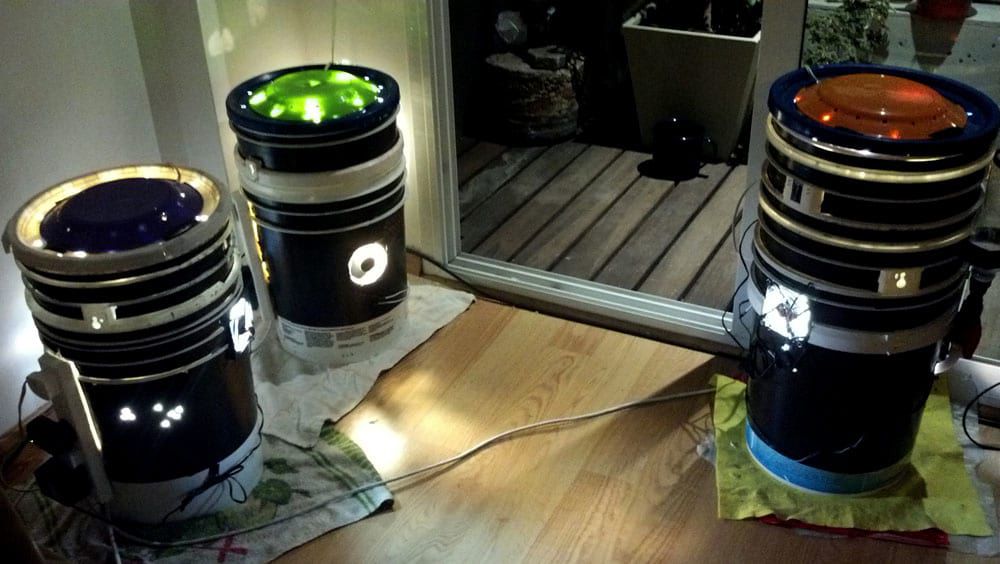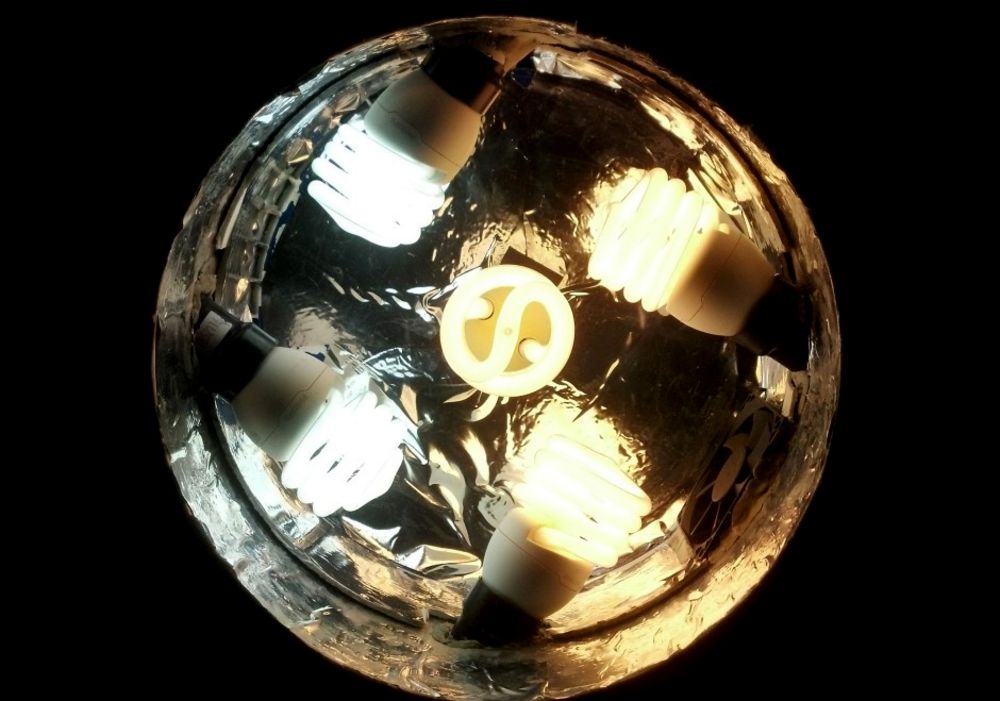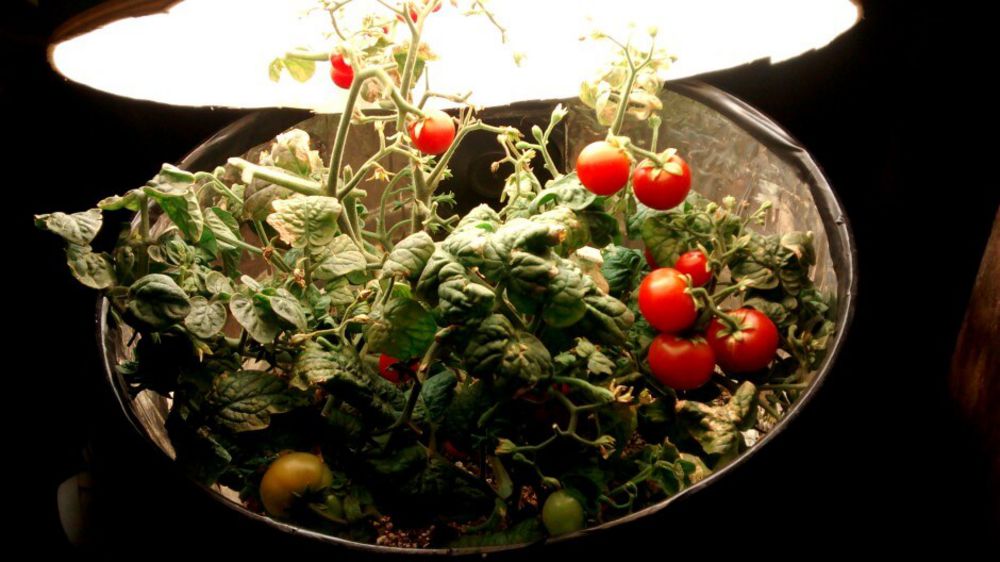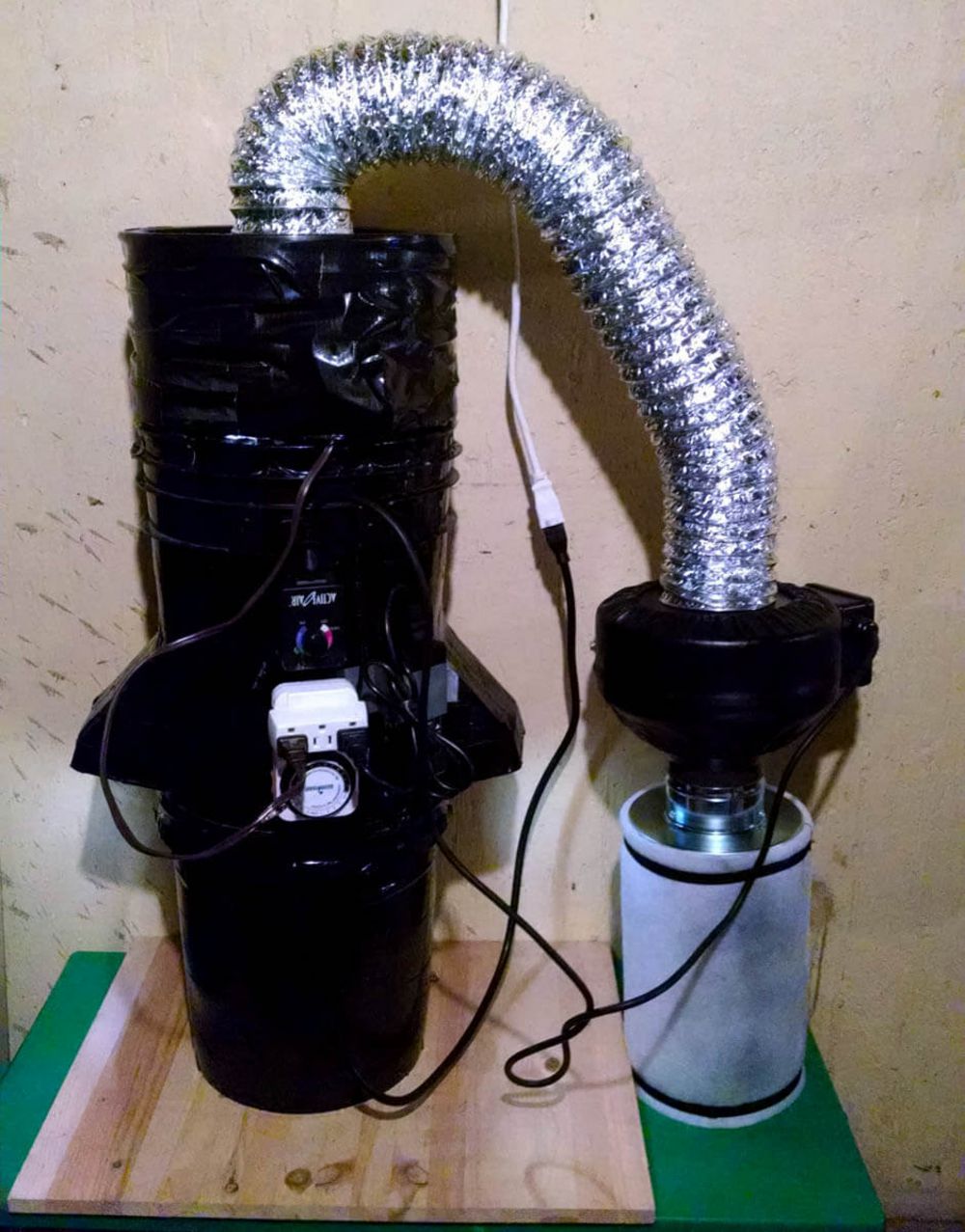Begin your Journey
by /u/ekrof
 A group of Space Buckets in their natural habitat
A group of Space Buckets in their natural habitat
A Space Bucket is a DIY indoor garden that is made by stacking plastic containers alongside lighting (CFL or LED) and airflow (PC or other fans). It is an intensive growth chamber that can be used to grow many kinds of plants.
A Space Bucket is a versatile gardening tool that can be adapted to the users needs. Every variable of its environment can be tweaked and upgraded: for example, some species may require more light intensity than others, or different humidity conditions.
Space Buckets is also a movement of gardeners, a community of botanically inclined individuals who like to grow plants indoors and share information freely. The /r/SpaceBuckets subreddit is our main forum, and this website is its companion. Bucketeers are open, friendly and thorough, as the manifesto states.
- Start by choosing a main container »
- Always follow SAG's safety guidelines »
- View over 350 build examples in the Gallery »
What type of lighting should I use?
 CFL bulbs are a low cost alternative to LED
CFL bulbs are a low cost alternative to LED
You can choose CFL or LED for your bucket. The LED option can be solved with a UFO LED grow light. The recommended size is the '180w' model for a typical 5gal Space Bucket. If you go the CFL route, about 4x23w bulbs will be needed. You can mix light spectrums (like 2700K and 6500K) during the whole life of the plant, though warm-white is preferred for all around plant growth. Either configuration can be used along 5630SMD LED light strips. These lights stick to the walls of the bucket for extra photosynthesis.
- Learn more about lighting solutions »
- Learn more about LED sidelighting »
- Read the collection of LED grow lights reviews »
Will my electrical bill increase?
Great answer by /u/bent42: 'There are two factors: the wattage of your lights, and your cost per Kilowatt. Electricity is billed by the Kilowatt/hour. So if you know the 'true' watts of your lights (and fans) and how long they are on, you can easily calculate the cost. For example: 150 watts total x 24 hours of veg = 3600 watts in 24 hours, or 3.6 kilowatts a day. The average price per kilowatt/hour in the US is around 12 cents, so 3.6*$0.12=$0.43/day in veg, or about $13/mo, and about half that in flower.'
What plants can I grow with this setup?
 Cherry tomatoes love to grow in Space Buckets
Cherry tomatoes love to grow in Space Buckets
You can grow any plant you can imagine! Space Buckets can be used for the entire life of most plants, and also works great for germinating seeds or maintaining clones. You will see that Cannabis is a very popular choice among bucketeers, but its not the only thing that thrives in this DIY indoor garden. Users from the subreddit community have grown Tomatoes, Peppers, Dill, Chives, Basil, and even Wasabi and Avocado! All plants enjoy the bucket garden, especially herbs and fruits. You are invited to try new types of plants, every species deserves a bucket. Plant experimentation is encouraged! Why not some SB avocados, succulents or potatoes?
Which training techniques work best?
LST (low-stress training) is a basic tool for keeping the height of the plant under control. You can use hooks to tie the branches to the soil or the side of the pot. You can even create a SCROG net to grow as horizontally as possible. Topping is another recommended training technique for a bucket grow: you have to cut the top-most growth of the plant. This will cause it to bush out, and two tops will appear from the 'shoulders' of the node. Pruning can be a good idea too: you can remove some leaves if they're blocking too much light from the tops. This is better done in moderation.
 An inline filtered Space Bucket with 5gal buckets
An inline filtered Space Bucket with 5gal buckets
What to do about smelly plants?
To control odors from your plants, you will need powerful ventilation and some type of carbon filter. If you want to get rid of mostly all the smell, you should look into inline fans and filters, which can be connected with ducting to one or more buckets. Another option is ONA gel, as SAG says: 'ONA does wonders particularly during a harvest where a simple charcoal filter may not cut it'. You have to put the gel outside of the bucket, near the exhaust fan.